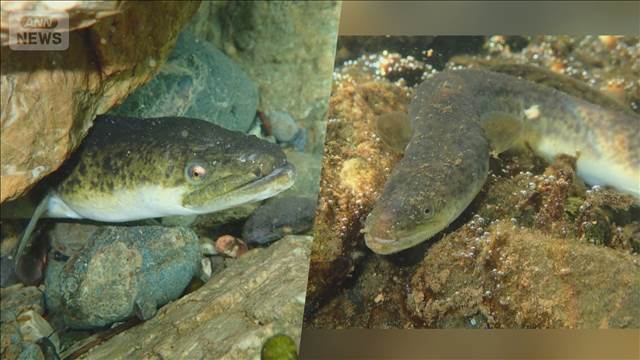
When you buy through links on our articles, Future and its syndication partners may earn a commission.

Europe's Ariane 6 heavy-lift rocket took to the skies for the fourth time ever today (Nov. 4).
An Ariane 6 lifted off from Europe's Spaceport in Kourou, French Guiana today at 4:02 p.m. EST (2102 GMT; 6:02 p.m. local time in Kourou), carrying the Sentinel-1D Earth-observation satellite to low Earth orbit (LEO).
The Ariane 6 deployed Sentinel-1D about 33.5 minutes after liftoff today as planned, at an altitude of 440 miles (708 kilometers).

The Ariane 6 is the successor to the Ariane 5, which retired in July 2023 after 27 years of service. The new rocket debuted with a checkered July 2024 test flight, then followed that up with two fully successful operational launches, in March and August of this year.
Ariane 6 made it three in a row today with the launch of Sentinel-1D, which is part of the European Union's Copernicus Earth-observation program.
The Sentinel-1 series of satellites capture detailed radar imagery of Earth, "performing in all weathers, day and night," European Space Agency (ESA) officials wrote in a Sentinel-1D mission description. "This service is vital for disaster response teams, environmental agencies, maritime authorities, climate scientists — and other users who depend on frequent updates of critical data."
Three Sentinel-1 satellites had launched before today, and two of those remain operational (Sentinel-1A and Sentinel-1C). Sentinel-1D will replace Sentinel-1A, which has been eyeing Earth from orbit for 11 years — well beyond its planned operational lifetime, according to ESA.
"The Sentinel-1D satellite will work in tandem with Sentinel-1C to generate timely data," agency officials wrote in the description. "Both satellites have a C-band synthetic aperture radar (SAR) instrument on board, which captures high-resolution imagery of Earth's surface. They are also equipped with Automatic Identification System (AIS) instruments to improve detection and tracking of ships."

Today's launch was Europe's fifth orbital mission of 2025. In addition to the three Ariane 6 flights, the Vega C smallsat launcher — which, like the Arianespace, is operated by the France-based company Arianespace — has aced two missions so far this year, in April and July.
For context, SpaceX has launched 140 missions of its workhorse Falcon 9 rocket in 2025. More than 70% of those flights have been devoted to building out the company's Starlink megaconstellation in LEO.
Editor's note: This story was updated at 1:14 p.m. ET on Nov. 5 with news of successful liftoff, then again at 1:39 p.m. ET with news of satellite deployment.
LATEST POSTS
- 1
 赤字2000億円超の日産、「三重苦」で再建は不透明…販売不振・トランプ関税・半導体不足(読売新聞オンライン)
赤字2000億円超の日産、「三重苦」で再建は不透明…販売不振・トランプ関税・半導体不足(読売新聞オンライン) - 2
 The most effective method to Amplify Your Opportunity for growth in a Web-based Degree Program
The most effective method to Amplify Your Opportunity for growth in a Web-based Degree Program - 3
 オオウナギが陸上でも狩り 東京大学など研究チーム明らかに コオロギ捕食(テレビ朝日系(ANN))
オオウナギが陸上でも狩り 東京大学など研究チーム明らかに コオロギ捕食(テレビ朝日系(ANN)) - 4
 Scientists document a death from a meat allergy tied to certain ticks
Scientists document a death from a meat allergy tied to certain ticks - 5
 2024 Moving Styles for Kitchen Redesigns
2024 Moving Styles for Kitchen Redesigns
 Discovering a sense of reconciliation: Reflection and Care Practices
Discovering a sense of reconciliation: Reflection and Care Practices Tire Brands for Senior Drivers: Guaranteeing Security and Solace
Tire Brands for Senior Drivers: Guaranteeing Security and Solace Vote In favor of Your Favored Sort Of Bevarage
Vote In favor of Your Favored Sort Of Bevarage Getting ready for a Mechanized World: 10 Positions That computer based intelligence Could Dominate
Getting ready for a Mechanized World: 10 Positions That computer based intelligence Could Dominate 2 new malaria treatments announced as drug resistance grows
2 new malaria treatments announced as drug resistance grows 2 ways you can conserve the water used to make your food
2 ways you can conserve the water used to make your food Greece eyes migrant repatriation centres outside the EU
Greece eyes migrant repatriation centres outside the EU Famous Rough terrain Vehicles for 2024
Famous Rough terrain Vehicles for 2024 Individual Preparation Administrations to Raise Your Wellness Process
Individual Preparation Administrations to Raise Your Wellness Process













